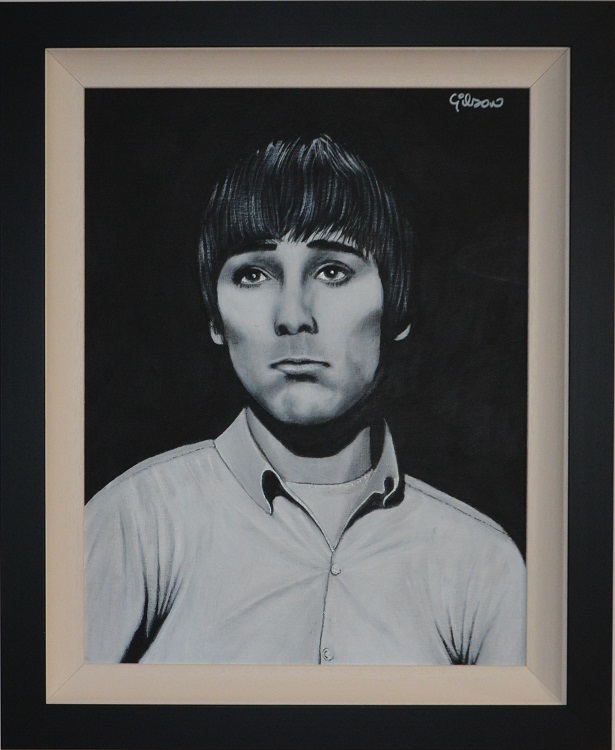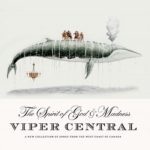 “The Spirit of God and Madness” is a perfect example of the way music evolves. Viper Central started their musical life as a traditional bluegrass string band, but on their third album they’re pushing the bluegrass boundaries by incorporating some non-traditional elements into the mix. And there’s a pretty clear demarcation as well; the first half of the album features the more experimental material, including the jazzy shuffle of the opening song “Gold Mine” with its honky-tonk piano solo, “Ned Kelly”, dominated by a menacing over-driven harmonica, and the slow, psychedelia-washed, “Say, Say”. That’s before you even get to the manic melange of “Losing my Mind”, blending Mexican trumpets, jazz mandolin and tempo changes.
“The Spirit of God and Madness” is a perfect example of the way music evolves. Viper Central started their musical life as a traditional bluegrass string band, but on their third album they’re pushing the bluegrass boundaries by incorporating some non-traditional elements into the mix. And there’s a pretty clear demarcation as well; the first half of the album features the more experimental material, including the jazzy shuffle of the opening song “Gold Mine” with its honky-tonk piano solo, “Ned Kelly”, dominated by a menacing over-driven harmonica, and the slow, psychedelia-washed, “Say, Say”. That’s before you even get to the manic melange of “Losing my Mind”, blending Mexican trumpets, jazz mandolin and tempo changes.
The second half of the album is, by and large, more traditional, featuring short instrumentals and tales of the frontier era; “I Won’t be Left” tells the story of a young woman who left Ireland for the USA and walked across The Rockies with three young children. It’s open to debate as to whether this collection gels as a complete album but it’s an interesting effort, and that’s the way music develops, morphs and mutates.
“The Spirit of God and Madness” is released on Friday August 4th.
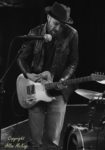 It came as quite a surprise three years ago when Henrik Freischlader announced his retirement from performing. Fortunately for fans of great guitar playing it was less of a retirement and more of a sabbatical. 2016 saw the release of the album “Openness”, a tour with the trio format and Henrik Freischlader was back. So what does 2017 have in store for us? Well, quite a lot actually, with the fun in the UK beginning with three gigs on the “Blues for Gary” tour, a tribute to Henrik’s hero Gary Moore, where he’s supported by Gary’s former sidemen, Pete Rees and Vic Martin and joined by Moritz Meinschäfer on drums. The three UK dates are:
It came as quite a surprise three years ago when Henrik Freischlader announced his retirement from performing. Fortunately for fans of great guitar playing it was less of a retirement and more of a sabbatical. 2016 saw the release of the album “Openness”, a tour with the trio format and Henrik Freischlader was back. So what does 2017 have in store for us? Well, quite a lot actually, with the fun in the UK beginning with three gigs on the “Blues for Gary” tour, a tribute to Henrik’s hero Gary Moore, where he’s supported by Gary’s former sidemen, Pete Rees and Vic Martin and joined by Moritz Meinschäfer on drums. The three UK dates are:
Under the Bridge, Chelsea – Friday July 28
The Tunnels, Bristol – Saturday July 29
Maryport Blues Festival – Sunday July 30
But that’s not all, after downsizing to a trio format in 2016, Henrik’s gone in the opposite direction this year, unveiling the Henrik Freischlader Big Band with singers Linda Sutti and Joanne Kasner, Moritz Meinschäfer (drums), Armin Alic (bass), Dániel Szebényi (keyboards), Marco Zügner (saxophone), Harrisen Larner-Main (guitar & vocals). With Henrik, that’s eight people on stage and a huge amount of talent.
They’re coming to the UK in September for six dates and this is something you really don’t want to miss. Catch them here:
Band on the Wall, Manchester – Tuesday September 19
Robin 2, Bilston – Wednesday September 20
ABC 2, Glasgow – Thursday September 21
The Flowerpot, Derby – Friday September 22
The Borderline, London – Saturday September 23
Komedia, Brighton – Sunday September 24
Do yourself a favour and try to catch one of these shows; you certainly won’t regret it.
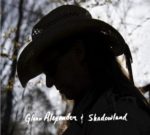 You never know where the next review’s coming from; could be the inbox, could be the letterbox, could be backstage at a gig. Yeah, it’s the last one. A couple of weeks ago, Glenn Alexander slipped this album into my greasy mitt backstage at The Forum in Kentish Town. Glenn’s the guitar player for Southside Johnny and the Asbury Jukes (amongst other things) and he released this solo album last year produced by the Jukes saxophonist, John Isley. If you’re a Jukes fan and you look at the credits for the album, you’ll recognise most of the names; when you work with world-class musicians in the day job, why not use those guys when you pursue your own vision?
You never know where the next review’s coming from; could be the inbox, could be the letterbox, could be backstage at a gig. Yeah, it’s the last one. A couple of weeks ago, Glenn Alexander slipped this album into my greasy mitt backstage at The Forum in Kentish Town. Glenn’s the guitar player for Southside Johnny and the Asbury Jukes (amongst other things) and he released this solo album last year produced by the Jukes saxophonist, John Isley. If you’re a Jukes fan and you look at the credits for the album, you’ll recognise most of the names; when you work with world-class musicians in the day job, why not use those guys when you pursue your own vision?
I’m not giving you a detailed biography of Glenn Alexander; you can find that anywhere. All I’m saying is that this album proves conclusively that Glenn is a lot more than just an incredibly good guitar player. The album opens with the fairly straightforward boogie of “If Your Phone Don’t Ring”; it’s great fun, the horns are every bit as good as you expect the New York Horns to be and it’s a joyous start to the show. Without reading the sleeve notes, it’s obvious that the second song “Earl Erastus” is deeply personal for Glenn. It hints at Jerry Reed’s “Amos Moses” and it’s a tribute to Glenn’s granddad, who raised six kids during the Depression; it has huge emotional power and a lovely New Orleans horn coda of his favourite hymn (I’m guessing) featuring a vocal from Oria Aspen.
From there on in, it’s a melting-pot of the influences flowing over a teenager growing up in the centre of the USA; there’s the funky soul and Elvis-referencing “Memphis Soul”, the country feel of “I Picked the Wrong Day (To Stop Drinkin’)”, the horn-fired shuffle of “Get A Life” (featuring Southside on harmonica) and the slow blues of “Blues For Me & You”, a duet with Oria Aspen contrasting Glenn’s rough-hewn blues vocal with Oria’s more pure jazz stylings.
You might think that was enough, but there are still surprises to come. The album’s penultimate song, “The Odds Are Good”, proves that Glenn Alexander’s not just about melody and guitar solos; the lyrics are clever, and in the style of Dylan or early Springsteen. This guy is much more than a great rock guitarist, he’s a very gifted songwriter and a pretty good singer in a Joe Walsh kinda style. There’s no real commercial imperative behind this album, it was created for the sheer joy of making music with stunningly good players. Great songs, Hammond and horns; this is the business, what more do you need?
“Glenn Alexander & Shadowland” is out now on Rainbow’s Revenge Records.
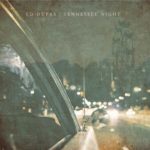 After his outstanding debut “American Life” in 2015, this must be that difficult second album for Ed Dupas. However difficult its conception (and it sounds like there were a few painful moments), the end result is a fulfilling follow-up to his debut. It’s a progression of course; at times Ed puts his acoustic to one side to add a second over-driven electric to the guitar attack, creating a big widescreen sound that brings to mind early Bruce Hornsby and maybe even “Darkness”-era Springsteen.
After his outstanding debut “American Life” in 2015, this must be that difficult second album for Ed Dupas. However difficult its conception (and it sounds like there were a few painful moments), the end result is a fulfilling follow-up to his debut. It’s a progression of course; at times Ed puts his acoustic to one side to add a second over-driven electric to the guitar attack, creating a big widescreen sound that brings to mind early Bruce Hornsby and maybe even “Darkness”-era Springsteen.
And that’s the way the album opens; “Too Big to Fail” is a rocker packed with big, loud guitars delivering Ed’s perfectly crafted song. His lyrics are clever and subtle, combining the “too big to fail” business/sports franchise mantra with subtle allusions to the state of contemporary America; it doesn’t matter how bad things are, ‘love’s too big to fail’. I really hope so. The album’s second song, “Two Wrongs”, continues the two guitar attack with lyrics seamlessly interweaving the increasing isolation of rural America with a short-term, unwise, dalliance; real life might look simple on the surface, but it’s usually messy underneath.
The remainder of the album mixes country and rock stylings to great effect, combining the two perfectly in the title track, which takes up the themes of “The Wild Side of Life” and “Bright Lights, Big City” while giving the story a happy ending (well, maybe). The album’s closer “Hold Me Tight” has echoes of Bob Seger’s acoustic side (well, Ed is based in Ann Arbor) and neatly finishes the journey from the opening rockers to the closing mixture of regret and nostalgia.
I’m rapidly becoming a big fan of Ed Dupas; the delivery is impossible to fault and his songs are superbly crafted with the emphasis on subtle allusion rather than declamation. It’s difficult not to admire a songwriter that trusts his audience to think and interpret for itself and put in a little effort to appreciate the songs.
While I’ve got your attention, I’d just like to point you in the direction of a song from Ed’s 2015 debut album. “Flag” is a beautiful example of the songwriter’s craft and would move the hardest heart. Give it a listen and tell me I’m wrong. Now how about some UK appearances, Ed?
“Tennessee Night” is released in the UK on Friday July 28 on Road Trip Songs.
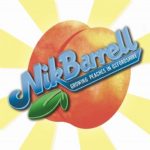 Well, it’s an interesting idea, creating an album filled with only cheerful upbeat songs. Not only that, but Nik Barrell decided to record the entire album in one session using only acoustic instruments and no drums. That sounds like a pretty hard sell in world where the term singer-songwriter often means purveyor of melancholy confessionals, so how successful is Nik Barrell in realising his vision? Well I guess that depends on the point of view of the listener; if you don’t share his vision and you do like a bit of musical misery, then it’s probably not for you.
Well, it’s an interesting idea, creating an album filled with only cheerful upbeat songs. Not only that, but Nik Barrell decided to record the entire album in one session using only acoustic instruments and no drums. That sounds like a pretty hard sell in world where the term singer-songwriter often means purveyor of melancholy confessionals, so how successful is Nik Barrell in realising his vision? Well I guess that depends on the point of view of the listener; if you don’t share his vision and you do like a bit of musical misery, then it’s probably not for you.
Within the limitations he’s set himself, the album works really well. There are slow songs, uptempo songs, the odd one in waltz time and even the raucous “New Orleans” praising the Big Easy in comparison with other American cities. The band, and particularly the female singers, create some sumptuous settings for the songs. And the songs themselves are great musically but the pessimist or fatalist in me finds the relentless cheerfulness just a little bit cloying, particularly on the final song “People are Good”. In fairness to Nik he stuck to his vision and delivered an album full of upbeat songs and if that’s your thing, you’ll probably love it.
“Growing Peaches in Oxfordshire” is out on Friday July 7.
 By an interesting series of coincidences, I found myself backstage at a Southside Johnny & The Asbury Jukes gig at The Forum in Kentish Town pointing the trusty MusicRiot microphone in the direction of Gilson Lavis. If you have any interest at all in popular music, you must have heard of Gilson in one of his two musical careers; he’s a great and highly respected drummer but I wasn’t there to talk about his music; we don’t do the obvious stuff like that at MusicRiot. I was there to talk to Gilson about art. There’s a reference at the end to Johnny stealing my thunder; he voicebombed the interview about a third of the way in to talk to Gilson about how much he loved Squeeze.
By an interesting series of coincidences, I found myself backstage at a Southside Johnny & The Asbury Jukes gig at The Forum in Kentish Town pointing the trusty MusicRiot microphone in the direction of Gilson Lavis. If you have any interest at all in popular music, you must have heard of Gilson in one of his two musical careers; he’s a great and highly respected drummer but I wasn’t there to talk about his music; we don’t do the obvious stuff like that at MusicRiot. I was there to talk to Gilson about art. There’s a reference at the end to Johnny stealing my thunder; he voicebombed the interview about a third of the way in to talk to Gilson about how much he loved Squeeze.
Allan Hi Gilson. Some of us know you as the drummer in Jools Holland’s Rhythm and Blues Orchestra, The older ones know you as the drummer in Squeeze, but now you’ve got a new career as an artist, so how did that start?
Gilson Well, it started out of boredom really. I lead a pretty clean life these days; I don’t drink or any of the other stuff, thankfully and hanging about on the road or hanging about in hotel rooms, I’ve been doing it for about fifty years now, and it started to get a bit wearing, so I started to doodle and the doodles turned in to sketches and the sketches turned into paintings and now the paintings have turned into exhibitions. So it just sort of grew really and I’m in a very privileged position because with my position in the Rhythm and Blues Orchestra we get to play with some of the world’s best entertainers and performers and I see them close at hand and I try and paint them, and I think I can capture some of the real essence of the person.
Allan You had an art school background didn’t you? Did you continue to draw after you left art school and joined Squeeze?
Gilson No, I went straight into music, the driving force being sex; I wanted to pick up girls. It never really worked, but I got into the music business and I’m still doing that so the art was just put away really. I didn’t pick up a sketch pad or an easel or a paintbrush until about ten years ago, when I started again.
Allan Do you think you choose your subjects or do you think they choose you?
Gilson It’s a mixture of both really. As I said, I tend to sketch and paint people that I work with and sometimes I’ll get inspired by an image I see of somebody and I’ll paint from that, but really it’s working with these people that’s the driving force.
Allan You’re working mainly in acrylic on canvas aren’t you? Do you work in any other media?
Gilson Yeah, I do. I do ink sketches. That’s really what I do on the road, sketch in ink, but when I’m at home, I’ve got a large studio and my own gallery, so I paint at home and sketch on the road.
Allan In the creative process, do you have certain steps that you follow? I’m thinking of the preparation; I saw the Louis Armstrong sketch that you did and obviously you couldn’t do that from life so presumably you researched that online.
Gilson I do actually. A lot of the people I’ve painted or sketched, they’re too busy to sit for me; they’re not going to come round to my house and sit, so I do have to sketch from images. I try to take photographs when I’m working with them and sketch or paint from those, but it’s not always possible, because some of these people like Louis are no longer with us, I have to research them and I look for images that are inspiring and I tend to blend three or four images to get the look that I’m searching for, so it sort of grows.
Allan I’ve met quite a lot of musicians who have other artistic pursuits, painting, photography and so on. Do you think it’s a bit of a release valve?
Gilson I’m sure it is, it absolutely is. Though it’s a real privilege to work with the Rhythm and Blues Orchestra; it’s high profile and we play big venues, but it is quite a restrictive environment. I’m there to make Jools sound good, I’m there to make the big band work, I’m not really cutting loose on what I want to do and the painting really allows me to be creative.
Allan So the band becomes the day job and your creative outlet is the painting.
Gilson But it’s a very enjoyable day job, I’m in a very privileged position.
Allan I’m fascinated by the paintings and the way they reflect the personalities of the people you’ve portrayed and it struck me that they’re not hyper-realistic, but they’re a long way from caricature, aren’t they? The one that particularly struck me, and I wonder how people will react to it, was Keith Moon, because he has a really serene look in that portrait.
Gilson Well, thank you. There are many, many images of Keith being crazy, that’s what he’s famous for, but I really wanted that sort of innocence of the young lad before he went on that crazy journey. I think that’s what I was aiming for, that innocent, lost look, not even knowing what’s going on. What went on of course was craziness and death in the long run.
Allan That was what immediately grabbed me about that particular image, the innocence. I understand that you’ve got a book of some of your images out as well.
Gilson Do you mean the one with the drummer portraits?
Allan That’s the one.
Gilson It was released two months ago actually. It’s eighteen portraits of drummers that have influenced me with a short snippet of a quote by each of them. I was asked many times, who influenced me as a drummer and eventually I thought “I know, I’ve got a good idea, what I’ll do is I’ll paint my influences and put them in a book” and it seems to have worked really well, it’s popular and it’s selling quite well, I’m pleased to say. It’s called “Drummers” by Gilson Lavis.
Allan I understand there’s an exhibition coming up in New York as well.
Gilson There is, yeah, at the Salomon Arts Gallery in Tribeca and it opens on the fourteenth of September. I’m really excited about it; I’ve been fortunate enough to have a few exhibitions in Great Britain but this’ll be the first in New York and I’m really excited by it and a bit nervous, to be honest, because we’re all deeply insecure, us painters, we’re all waiting to be laughed at.
Allan I think photographers are exactly the same. Your career must have had so many highlights, is there anything that really stands out in your memory as a real high point?
Gilson Yes, there is. It was when I was fortunate enough to get the phone call to play drums with Smokey Robinson on Later and on rhythm was Eric Clapton, Jools Holland on piano and Dave Swift on bass and me on drums. In fact there’s a little story about that, we were there, Eric, myself and Jools were there ready to rehearse with Smokey and he was flying in from America and it got to his allotted rehearsal time and we got the message he was a bit tired so he’ll be here in a couple of hours. We all downed tools and waited and then he didn’t show up, he was still a bit tired, and the show started to be recorded and we still hadn’t seen him and I’m sitting behind the drum kit and Eric’s looking a bit sort of worried. We knew the song, everybody know Smokey’s songs. The band before us was playing and thirty seconds before they finished, Smokey Robinson walked out on to the set and I’ve never seen anybody look more like a star than he did; he glistened. His skin was beautiful, his hair was just perfect, he had an incredibly dapper suit; he walked out and I counted the song in and we played it and he was just magnificent and then he turned round and nodded at Eric, he ignored me completely but I don’t mind and off he went and that was it, that was my experience of Smokey Robinson. But it was fantastic, it was a real buzz to play with one of my heroes, and there have been many.
Allan Johnny actually stole my thunder earlier because I was going to say at the end, did you know that Johnny’s a big fan of Squeeze and Jeff Kazee’s also a huge Squeeze fan.
Gilson I didn’t know. I had no idea.
And with that, we had to clear out of the Jukes’ dressing room as the band prepared for the show, but not before Gilson presented Johnny with an ink portrait of Mr Lyon himself. A couple of hours later, Gilson joined The Jukes on stage, taking the drum stool for “Key to the Highway”. And here’s the Keith Moon portrait:
